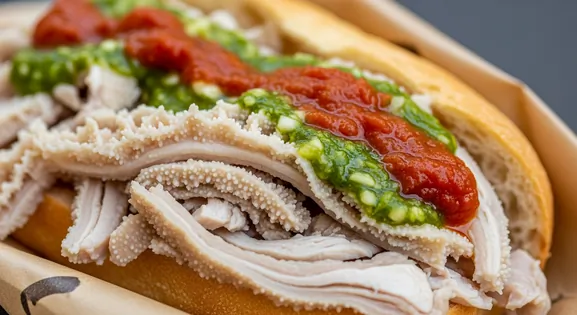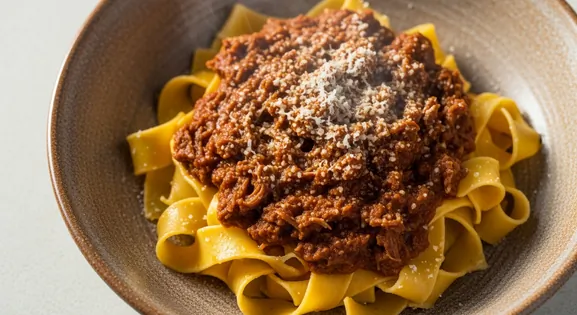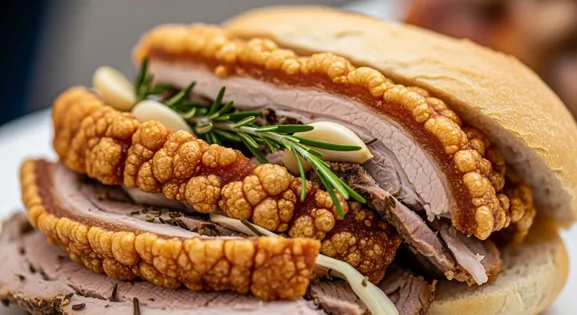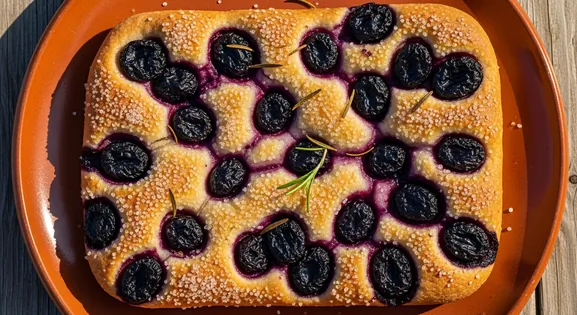Finocchiona in Florence
Finocchiona
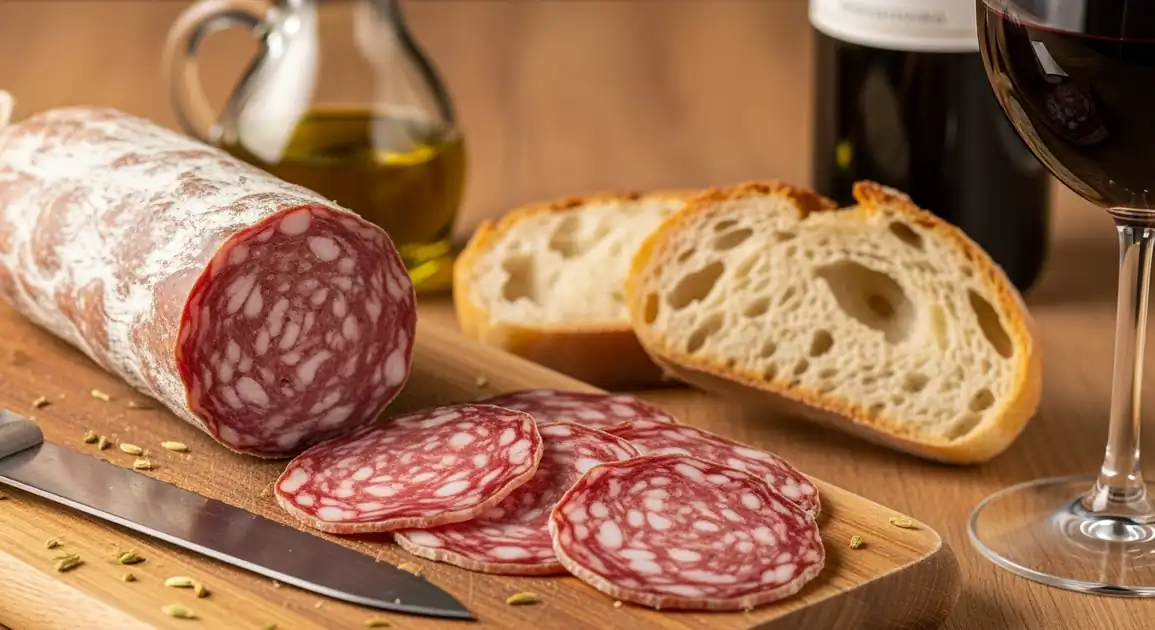
The Essential Guide to Finocchiona
Stepping into a Florentine salumeria, the aroma of finocchiona is unmistakable. This fennel-laced salami is a true taste of Tuscany, deeply woven into the city's culinary fabric. As a local, I'll guide you to the best spots to savor this regional delicacy.
New to Finocchiona? Learn all about its history in our complete guide.
Traditions and Etiquette
Local Significance
In Florence, finocchiona represents the city's proud culinary heritage and connection to the surrounding Tuscan countryside. It embodies the Florentine appreciation for high-quality artisanal food products.
Eating Customs
- Florentines typically enjoy finocchiona with unsalted Tuscan bread, allowing the flavor of the salami to shine.
- Sometimes rubbing the bread with a little olive oil ('fettunta') before adding the finocchiona.
- Often accompanied by a glass of Chianti, whose acidity balances the richness of the salami.
A Look at Local Preparations
Sbriciolona Fiorentina
A Florence specialty that's a softer, more crumbly version of finocchiona, typically aged for a shorter period. The texture is more delicate, almost spreadable on bread.
Finocchiona Piccola
Small-diameter finocchiona (about 10-15cm circumference) that's popular in Florence and aging more quickly, offering a slightly different texture profile than larger versions.
Insider Tips for Finocchiona
These specialized pork butcher shops in Florence often have the best selection of finocchiona and knowledgeable staff who can guide your choice.
The traditional unsalted Tuscan bread is the perfect accompaniment to finocchiona, allowing the salami's rich flavor to shine without competition.
This softer, more crumbly local variation of finocchiona is particularly popular in Florence and offers a delightful, melt-in-your-mouth texture.
Where to Find Finocchiona in Florence
Mercato Centrale
The iconic two-story market in San Lorenzo area houses several quality vendors selling finocchiona, particularly on the ground floor dedicated to fresh products.
San Lorenzo Church, Via dell'Ariento
Morning (8 AM - 12 PM)
Sant'Ambrogio Market
A more local market with excellent salumi vendors and generally better prices than the more touristy Mercato Centrale.
Piazza Ghiberti, Sant'Ambrogio Church
Morning (7:30 AM - 12:30 PM)
Oltrarno
The area 'across the Arno' has many small, authentic food shops catering more to locals than tourists.
Palazzo Pitti, Santo Spirito
Morning (9 AM - 1 PM), Afternoon (4 PM - 7 PM)
Historic Center Shops
Several historic salumerie and gastronomie, particularly along Via dei Neri, offer premium quality finocchiona. These shops often have deep relationships with Tuscan producers, ensuring authentic and high-quality products.
Via dei Neri, Via de' Tornabuoni
Midday (10 AM - 1 PM), Afternoon (4 PM - 7 PM)
Vendor Tips
- Ask for 'finocchiona IGP' specifically to ensure you're getting the protected designation product.
- Quality vendors in Florence will proudly tell you about their producers and aging methods.
- Look for shops where they slice the finocchiona to order rather than pre-sliced versions.
- If you speak limited Italian, shops in Florence are accustomed to foreign visitors and many vendors speak some English.
Authentic vs Imitation: The Telltale Signs
What to Look For
-
IGP certification seal on the product or menu
In Florence, reputable establishments serve only certified Finocchiona IGP, which guarantees adherence to strict production standards and regional authenticity.
-
Proper storage in cool, ventilated areas or refrigeration
Florence's climate, especially in summer, requires proper salumi storage. Quality shops keep finocchiona in temperature-controlled environments.
-
Freshly sliced to order, not pre-cut
Traditional Florentine salumerie slice finocchiona only when ordered, preventing oxidation and surface drying in the variable humidity.
What to avoid
-
Pre-sliced packages sitting at room temperature
In Florence's warm climate, especially summer, exposed sliced salumi deteriorates quickly. Quality establishments slice fresh to order.
-
Unusually low prices for IGP-labeled product
Authentic Finocchiona IGP requires specific ingredients and aging. In Florence, suspiciously cheap versions likely use inferior ingredients or methods.
-
Slices with yellowed fat or dried edges
Florence's variable humidity affects exposed finocchiona quickly. Discoloration indicates age, improper storage, or quality issues.
A Guide to Price, Portions, and More
Dietary Information
Important Note for Travelers: Your safety is our priority. Below are the common allergens associated with the traditional preparation of this dish. However, recipes and ingredients can vary significantly between establishments. Always confirm all ingredients directly with the food vendor before ordering, especially if you have a severe allergy.
Potential Allergens
Dietary Suitability
Price Guide
Budget Tips
- Avoid touristy shops near major attractions like the Duomo or Ponte Vecchio, which often charge premium prices.
- The Sant'Ambrogio market generally offers better value than the more famous Mercato Centrale.
- Small neighborhood shops outside the historic center often offer better prices than those in heavily touristed areas.
- Ask for smaller quantities (100g) to sample different producers without spending too much.
Serving & Seasonality
In Florence, finocchiona is typically served thinly sliced on wooden boards, often accompanied by local pecorino cheese and unsalted Tuscan bread ('pane toscano'). In wine bars and restaurants, it's commonly part of an 'antipasto toscano' or 'tagliere di salumi' (charcuterie board).Best Times to Enjoy
- Morning: Markets and food shops are freshly stocked and less crowded.
- Aperitivo: Pre-dinner hours (6 PM - 8 PM) when many wine bars offer platters featuring finocchiona.
- Lunch/Dinner: Served as an antipasto in many Florentine trattorias and restaurants, especially as part of a mixed charcuterie board.
Seasonal Availability
Available year-round in Florence, with consistent quality due to professional aging facilities.
A Simple Guide to Ordering
When ordering finocchiona in Florence, ask for 'finocchiona IGP' to ensure authenticity. Specify the thickness you prefer; locals often enjoy it sliced slightly thicker than other salumi to appreciate its texture. Don't hesitate to ask for a small taste ('un assaggio') before buying, especially in specialty shops. Pair it with 'pane sciocco' (unsalted Tuscan bread) and a glass of local Chianti for the true Florentine experience. Many vendors speak English, but a simple 'Vorrei finocchiona, per favore' (I would like finocchiona, please) is always appreciated.
Mastering the Experience
Navigating Florence's Historic Salumerie
Learn how to navigate Florence's traditional salumerie and specialty food shops to find the most authentic and high-quality finocchiona, a true Tuscan delicacy.
- Visit traditional shops in the Sant'Ambrogio market area, where many source directly from small producers in the Tuscan countryside.
- Explore the Oltrarno district's family-run salumerie, particularly around Piazza Santo Spirito, known for artisanal products.
- Look for shops displaying the 'Consorzio Finocchiona IGP' logo, indicating they sell the protected, certified product.
- During cooler months (October-April), visit outdoor markets like Mercato delle Cascine where countryside producers sell directly.
- Ask local shop owners about their specific supplier ('produttore') - knowledgeable vendors proudly share this information.
Understanding Florence's Finocchiona Aging Periods
Discover the nuances of finocchiona's aging process in Florence, understanding how different maturation periods affect its flavor and texture for a truly informed tasting.
- Young finocchiona (3-4 months aging) is softer and milder, preferred for antipasto plates in many Florentine trattorias.
- Medium-aged (5-6 months) offers the classic balance of tenderness and flavor, most commonly found in quality shops.
- Well-aged finocchiona (7+ months) develops more complex flavors and firmer texture, prized by connoisseurs and available in specialty shops.
- During winter truffle season, seek special finocchiona varieties aged alongside truffles, available in gourmet shops.
- Some historic salumerie offer vertical tastings of different aging periods - an educational experience worth seeking out.
Experiencing Florence's Salumi Traditions
Embrace the local customs and traditions surrounding finocchiona in Florence, from how to purchase it to the best ways to enjoy this beloved Tuscan salami.
- Request thicker slices than you might for other salumi - Florentines traditionally cut finocchiona slightly thicker to appreciate texture.
- Pair with unsalted Tuscan bread ('pane sciocco') and local wine as Florentines do, typically Chianti Classico or Vernaccia.
- Allow purchased finocchiona to come to room temperature before eating, enhancing aroma and flavor profiles.
- During Florence's hot summers, consume purchased sliced finocchiona within hours or keep refrigerated.
- Visit traditional Florentine wine bars ('enoteche') that offer curated finocchiona selections from different producers.
Our Commitment to Quality
At Tasteplorers, our mission is to provide the most accurate and useful travel information in the world. To achieve this, all content on this site is created through our unique editorial framework. We utilize leading AI research tools, guided by our proprietary prompts, and a multi-stage validation process. This entire system is overseen by our editorial team to ensure everything we publish meets our high standards for accuracy, cultural nuance, and practical value for travelers.
Learn more about our Editorial Process and our Mission.
Countries
Explore regions
Europe
Discover Europe's diverse culinary landscape, from Mediterranean flavors to hearty Alpine fare. Learn to navigate markets, decode menus, and eat like a local.
Latin America & Caribbean
Discover the vibrant cuisines of Latin America & the Caribbean. Our expert guide covers everything from Mexican street food to Peruvian ceviche and market tips.
Oceania
Explore Oceania's diverse food scene. Learn about Polynesian earth ovens, Fijian feasts, and the vibrant café culture of Australia and New Zealand.
Southeast Asia
Explore Southeast Asia's diverse food cultures from Thailand to Vietnam. Get expert tips on navigating spice levels, choosing quality vendors, and understanding the rich traditions of the region.
